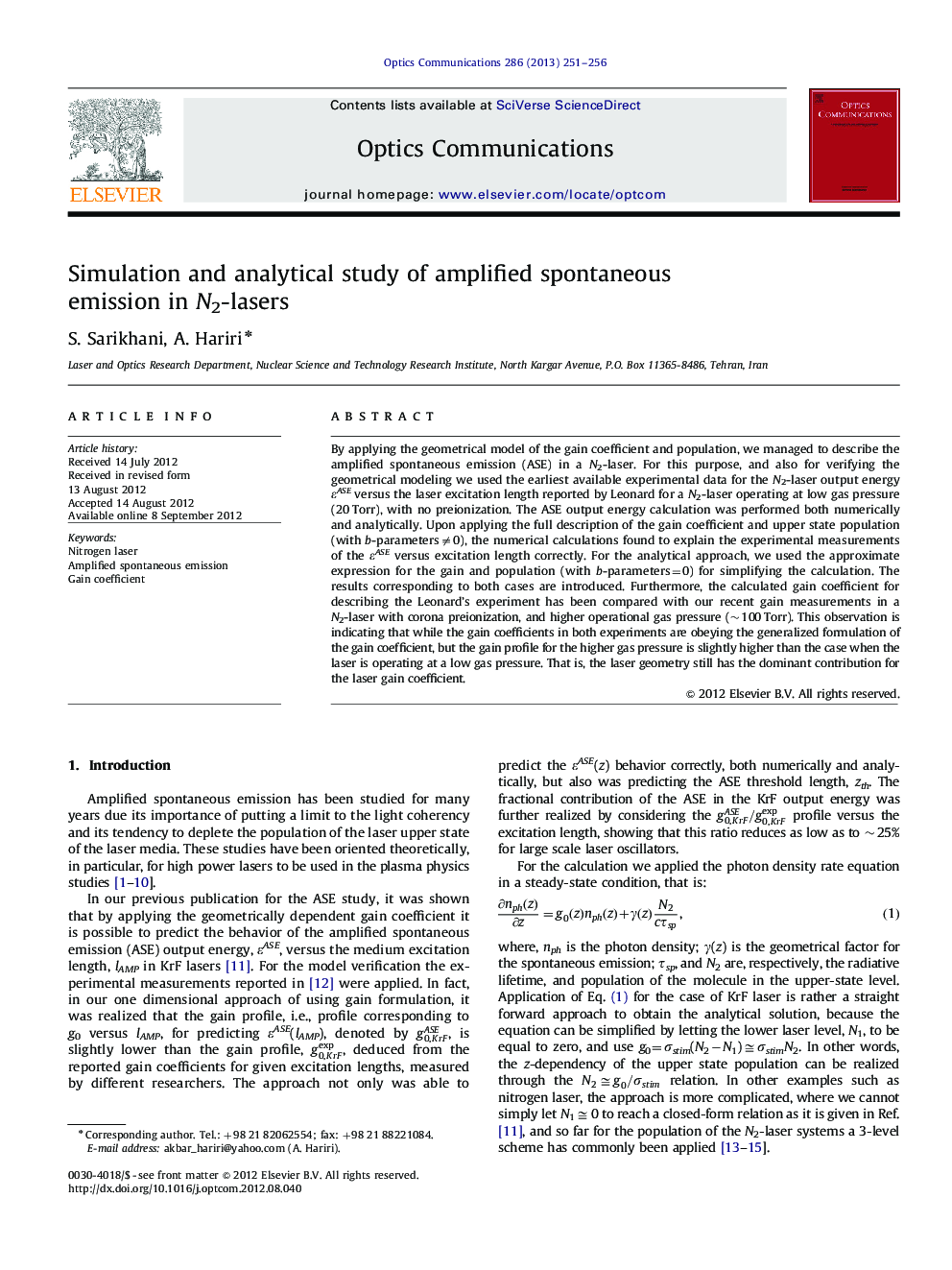| Article ID | Journal | Published Year | Pages | File Type |
|---|---|---|---|---|
| 1536278 | Optics Communications | 2013 | 6 Pages |
By applying the geometrical model of the gain coefficient and population, we managed to describe the amplified spontaneous emission (ASE) in a N2-laser. For this purpose, and also for verifying the geometrical modeling we used the earliest available experimental data for the N2-laser output energy εASE versus the laser excitation length reported by Leonard for a N2-laser operating at low gas pressure (20 Torr), with no preionization. The ASE output energy calculation was performed both numerically and analytically. Upon applying the full description of the gain coefficient and upper state population (with b-parameters≠0), the numerical calculations found to explain the experimental measurements of the εASE versus excitation length correctly. For the analytical approach, we used the approximate expression for the gain and population (with b-parameters=0) for simplifying the calculation. The results corresponding to both cases are introduced. Furthermore, the calculated gain coefficient for describing the Leonard's experiment has been compared with our recent gain measurements in a N2-laser with corona preionization, and higher operational gas pressure (∼100 Torr). This observation is indicating that while the gain coefficients in both experiments are obeying the generalized formulation of the gain coefficient, but the gain profile for the higher gas pressure is slightly higher than the case when the laser is operating at a low gas pressure. That is, the laser geometry still has the dominant contribution for the laser gain coefficient.
